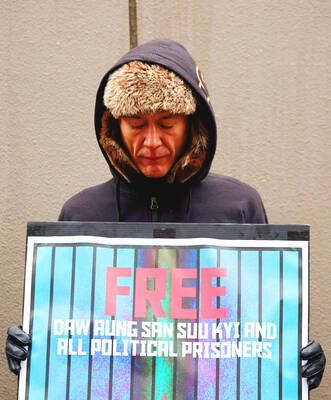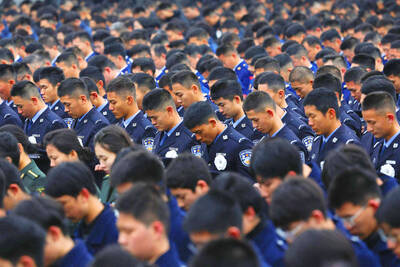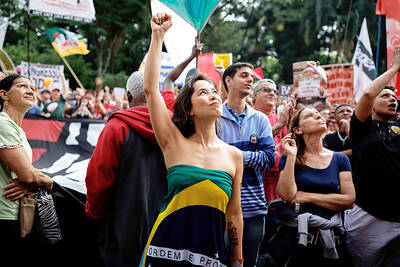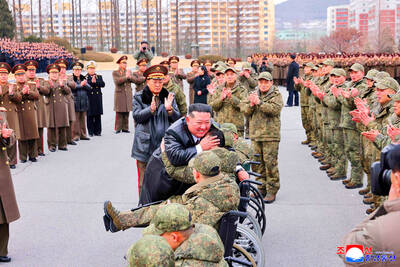Katherine Lotspeich was stopped cold by the front page of the New York Times on Sept. 11 last year. She was about to leave her home in Washington to teach a Sunday morning yoga class.
However, she could not take her eyes off a photograph depicting a portrait gallery of victims in the National September 11 Memorial and Museum at the World Trade Center.
Where a portrait of Antonio Dorsey Pratt was supposed to be, the photograph, by Angel Franco, showed a panel with an oak leaf, its veins turned yellow and its lobes tinged in russet.
The accompanying article described how the museum was searching for the missing portraits of seven people, Pratt included, to complete its gallery of all 2,983 victims of the terrorist attacks of Sept. 11, 2001, and Feb. 26, 1993. The oak leaf panels were merely place holders.
Wasting little time, Lotspeich sent an e-mail to her boss, Tammy Meckley: How can we help?
She had a hunch they could help because they work for the Immigration Records and Identity Services Directorate, part of the US Citizenship and Immigration Services in the Department of Homeland Security.
And five of the seven missing victims were immigrants.
The next day, Meckley, the associate director of the directorate, assigned two records specialists, Teddy Davis and Mike Quinn, to search the agency’s archives, including what are still known as “A files,” for “alien.”
Their search ended up extending well beyond Washington and below — 18m underground to be precise, to a limestone cave at Lee’s Summit, Missouri, that serves as a repository for the nation’s largest collection of inactive immigrant records.
Stored there were “A files” on Gregorio Manuel Chavez of the Dominican Republic, who became a permanent resident in 1999 and worked at the Windows on the World restaurant; Kerene Emeline Gordon of Jamaica, who became a US citizen in 2000 and worked for Forte Food Service in Cantor Fitzgerald’s cafeteria; Michael William Lomax of Britain, an executive at Aon who had been a permanent resident since 1996; and Ching Ping Tung of Hong Kong, an employee of First Commercial Bank and a US citizen since 1996. They were all killed on their jobs at the World Trade Center in 2001.
There was also a file on Wilfredo Mercado of Peru, who was naturalized in 1987 and killed in 1993.
“Those files need to be expedited to me,” Meckley told her associates.
The folders were on her desk two days later.
“I got a chill,” Meckley said. “My gosh, these are the records that the museum is looking for. Please let there be photos.”
There were. In each folder.
The immigration agency furnished the museum with all five head shots.
“It was an extraordinary windfall,” said Alice Greenwald, who on Sunday became the president and chief executive of the museum at the World Trade Center Foundation, succeeding Joseph Daniels.
“Tammy, you connected the dots,” Greenwald told Meckley on Thursday.

The Burmese junta has said that detained former leader Aung San Suu Kyi is “in good health,” a day after her son said he has received little information about the 80-year-old’s condition and fears she could die without him knowing. In an interview in Tokyo earlier this week, Kim Aris said he had not heard from his mother in years and believes she is being held incommunicado in the capital, Naypyidaw. Aung San Suu Kyi, a Nobel Peace Prize laureate, was detained after a 2021 military coup that ousted her elected civilian government and sparked a civil war. She is serving a

China yesterday held a low-key memorial ceremony for the 1937 Nanjing Massacre, with Chinese President Xi Jinping (習近平) not attending, despite a diplomatic crisis between Beijing and Tokyo over Taiwan. Beijing has raged at Tokyo since Japanese Prime Minister Sanae Takaichi last month said that a hypothetical Chinese attack on Taiwan could trigger a military response from Japan. China and Japan have long sparred over their painful history. China consistently reminds its people of the 1937 Nanjing Massacre, in which it says Japanese troops killed 300,000 people in what was then its capital. A post-World War II Allied tribunal put the death toll

‘NO AMNESTY’: Tens of thousands of people joined the rally against a bill that would slash the former president’s prison term; President Lula has said he would veto the bill Tens of thousands of Brazilians on Sunday demonstrated against a bill that advanced in Congress this week that would reduce the time former president Jair Bolsonaro spends behind bars following his sentence of more than 27 years for attempting a coup. Protests took place in the capital, Brasilia, and in other major cities across the nation, including Sao Paulo, Florianopolis, Salvador and Recife. On Copacabana’s boardwalk in Rio de Janeiro, crowds composed of left-wing voters chanted “No amnesty” and “Out with Hugo Motta,” a reference to the speaker of the lower house, which approved the bill on Wednesday last week. It is

FALLEN: The nine soldiers who were killed while carrying out combat and engineering tasks in Russia were given the title of Hero of the Democratic People’s Republic of Korea North Korean leader Kim Jong-un attended a welcoming ceremony for an army engineering unit that had returned home after carrying out duties in Russia, North Korean state media KCNA reported on Saturday. In a speech carried by KCNA, Kim praised officers and soldiers of the 528th Regiment of Engineers of the Korean People’s Army (KPA) for “heroic” conduct and “mass heroism” in fulfilling orders issued by the ruling Workers’ Party of Korea during a 120-day overseas deployment. Video footage released by North Korea showed uniformed soldiers disembarking from an aircraft, Kim hugging a soldier seated in a wheelchair, and soldiers and officials